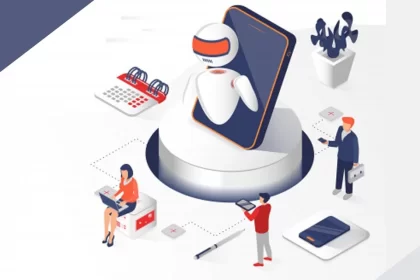When most individuals hear Artificial Intelligence, they think of robots or some famous science fiction film. However, it’s not even a step toward the current truth about AI. Artificial intelligence refers to the emulation of human intelligence of machines programmed to think and imitate their behavior like humans. The term can also be applied to any device that shows human mind-related characteristics like learning, interpretation, comprehension, and problem-solving. The real-life AI uses are maybe more than what many individuals know.
AI’s ideal feature is its ability to rationalize and take decisions that have the best chance of achieving a particular objective. With the human mind’s advancements, AI is no longer just a few machines doing necessary calculations. Artificial Intelligence applications are built using a cross-disciplinary approach focused on mathematics, computer science, linguistics, psychology, and many other fields.
Here’s a list of a few real-life AI uses:
- Personalized Online Shopping
The latest pantheon for all the principal tech giants has been the personalization of the experience of users. Ecommerce stores are not behind either and have become the largest platforms for AI’s customization domain implementation. The new artificial intelligence systems use AI-powered algorithms to curate the list of consumer shopping suggestions and releases.
They first gather user information related to the most recent search history of the user. These AI algorithms then create a list of products that meet the criterion of being useful or equivalent. The list may be of interest to buyers in similar and different categories to look at and consider buying. For instance, if a user has bought a smartphone, the AI algorithms suggest other add-on products, such as screen guards, earphones, etc. If the algorithms are intrinsic and intelligent enough, they can also further propose tailored items.
Users receive items through this personalization that they might be interested in choosing from. The suggestions from Amazon are a perfect example of real-life AI uses.
- Smart Cars
Self-driving cars are the most prevalent example of real-life AI uses, becoming increasingly reliable and ready to be dispatched every day. Google’s self-driving vehicle project to Tesla’s “autopilot” feature is a matter of time before AI is a standard-issue technology. Advanced Deep Learning algorithms can predict reliably what objects in the vicinity of the vehicle are likely to do. To generate control signals that run the vehicle, the AI system gathers data from the vehicle’s radar, cameras, GPS, and cloud services. Additionally, some high-end vehicles already come with AI parking systems. With AI’s evolution, fully automated vehicles can be seen on most streets soon enough.
- Marketing
Marketing, one of the best real-life AI uses, has become a crucial area for improvement and AI’s latest trends. In terms of AI’s entrance to the online marketing domain, the early 2000s were not significant. Yeah, there was e-commerce, but the hunt wasn’t that awesome. If you didn’t know the actual name, it was hard to find something in a store. It is due to AI enhancement that smart suggestions are now much more successful.
With the increasing development of AI, customers can buy products shortly by snapping a picture. Companies like CamFind and their rivals are already playing with this definition. Besides, AI has also made its way into many advertisers’ applications and hardware. It is needed to help them calibrate the vast volume of data and analyze it comprehensively. The key players where AI has shone and successfully elevated the different processes involved in data handling are Big Data and Machine Learning. AI’s marketing industry implementation has improved the domain’s efficiency, up to several notches, by taking away a load of performing monotonous activities.
- Enhanced Images
AI is used by cameras and applications to apply various effects on images, optimize their quality, and even propose how to click them live! AI can assist in identifying objects in photographs and also enhance the picture to the full extent. This is done by recognizing the depth, lighting, and scope of the picture and capturing every aspect in detail. Many apps and cameras allow you to add various effects to your images by using this feature.
AI’s features can act as an image background remover, increase focus on a particular object, or add filters. AI also allows the clicked image to do a plethora of other awesome experiments. Besides, AI is often used by Google Image search to enable users to look up photos of specific individuals in their contact lists or tags. In your photographs, it detects various individuals’ faces and allows you to tag them or scan them accordingly.
- Social Media
Social media has developed itself as an integral feature for the current generation. We have been producing an enormous amount of data via chats, tweets, posts, and so on. Wherever there is plenty of data, AI and machine learning are often involved in the argument’s most common understanding. In social media, the most common real-life AI uses are for face authentication and for detecting facial features.
Big data and machine learning can be correlated with AI in social media. Here deep learning is used to extract every minute of detail from an image using many deep neural networks. On the other hand, based on your preferences, machine learning algorithms are used to build your feeds.










